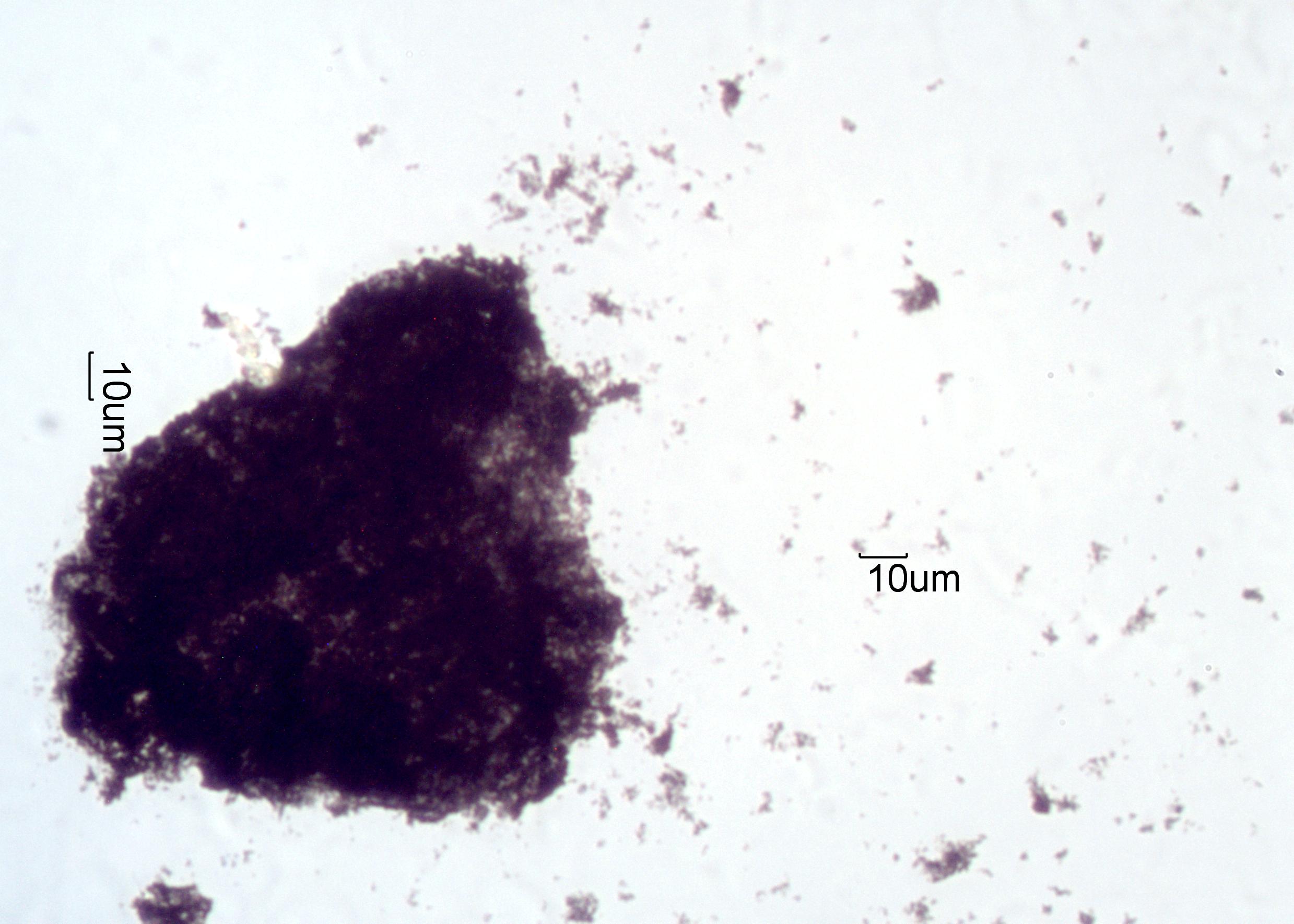Agglomerated Soot from a Kitchen Grease Fire
This type of particle is typical of uncontrolled combustion
of a liquid fuel. It is a collection of condensed hydrocarbons and soot
particles. These particles are very "sticky" and so don't travel very far from the
fire. This is from an environmental tapelift collected in the
family room after a grease fire in the kitchen.
Transmitted Off Crossed Polarized Light and Reflected Darkfield Illumination
Definition/Function:
Significance in the Environment:
Fires with insufficient oxygen where the plume tends to cool rapidly and where the fuel
contains ample volatile condensable materials create large
particles of agglomerated soot held together by the condensed tars from the fuel. These
particles are typical of fires creating very dense, black
smoke. The particles are "sticky", have a high sticking coefficient, due to the tars
present in the matrix. They tend to be created predominantly
by fires in confined spaces, such as building. They become a marker for the direct path
of the plume close to the fire because they have a very low
bulk density and high cross-section. They are little soot balloons. They collapse on the
surfaces they contact.
Characteristic Features:
Associated Particles:
References:


